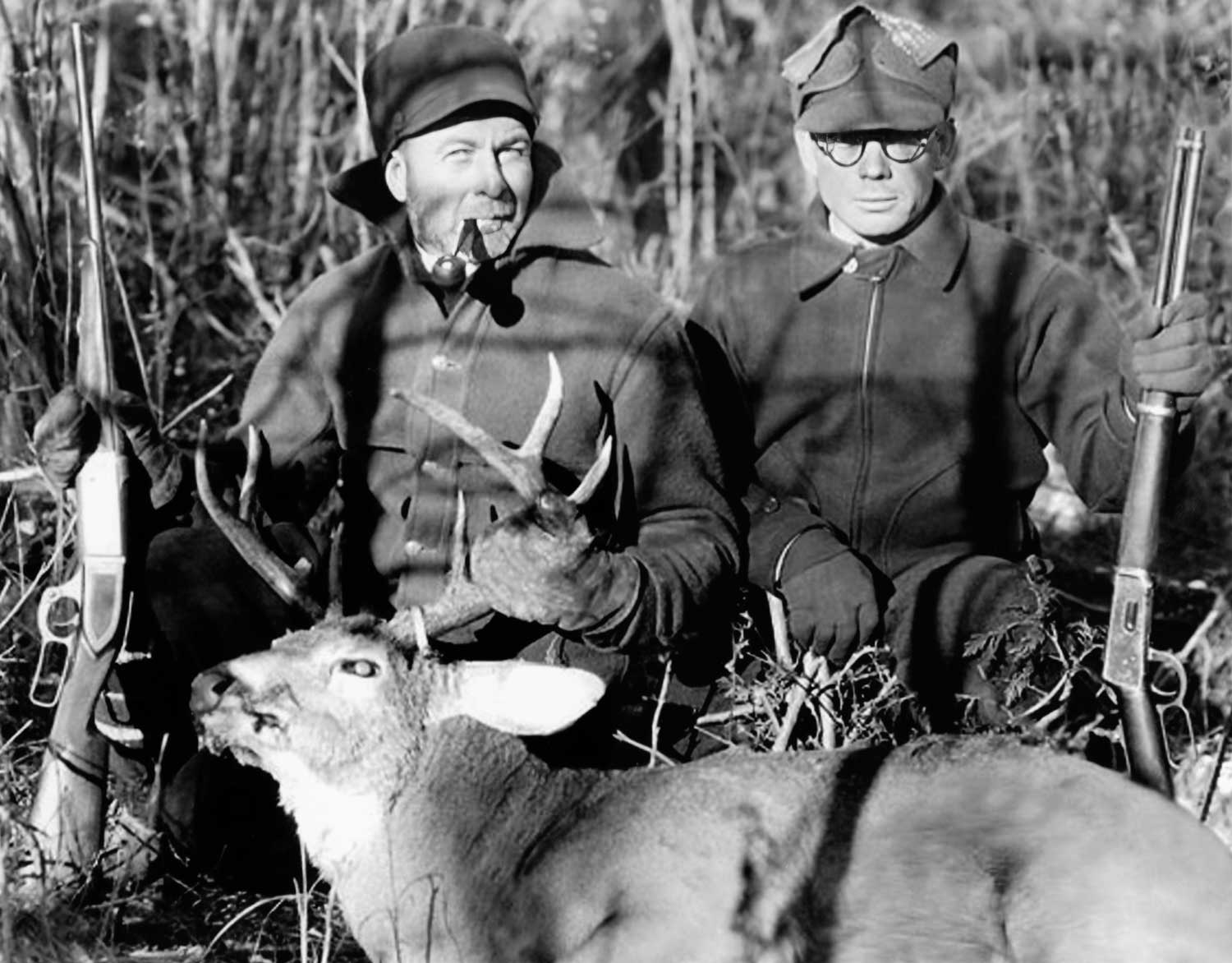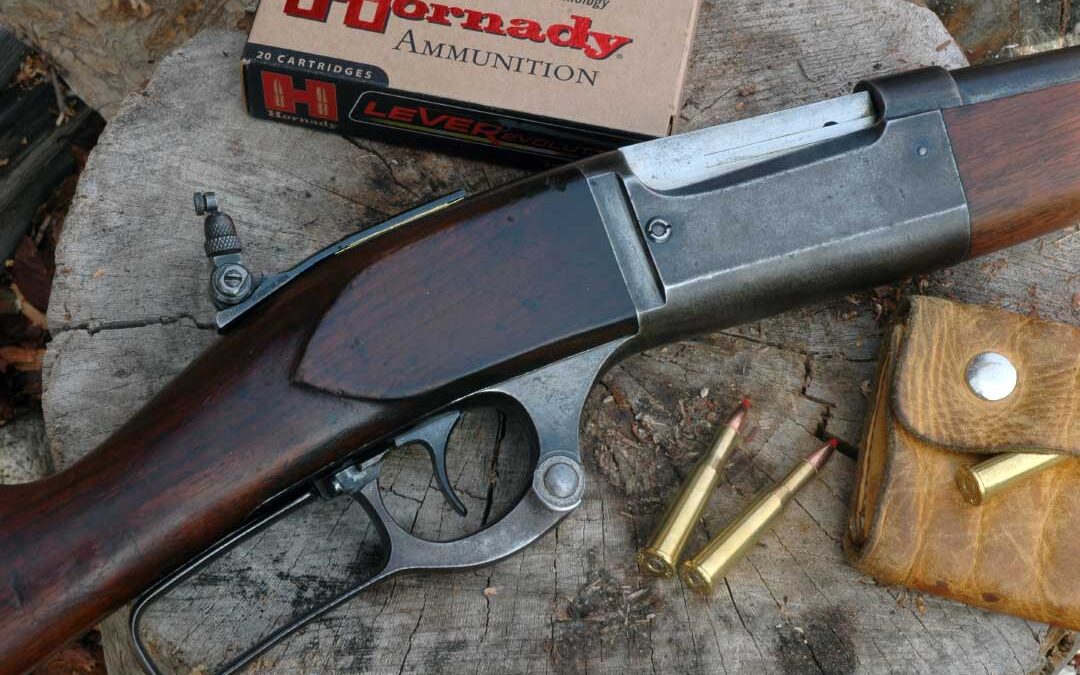Unless you can first tell me that it carries well, don’t trouble to tell me how it shoots.
Because, reaching up among the relics on the upper levels of the gun rack, I can grab down a rifle that will slay anything infesting the North American continent. It is a perfect specimen of the Ballard, bored and chambered for the 45-70 cartridge. It has a 32-inch barrel that is frequently mistaken for a 10-gauge slobber-tube and weighs a mere dozen pounds.
There’s a gun that was classed as a light sporting arm in its dim, prehistoric day, and whole volumes might be said or written of its shooting powers. But what’s the use?
Lead forth the lunatic who’d lug it far enough into the woods to get a shot at a chipmunk with it.
With it belongs already the 9 1/2 pounds of iron mongery once deemed necessary to handle that corking good pistol cartridge, the 44-40 and beneath the two will soon hang a choice assortment of 8 1/2-pounders of the 30-caliber ilk.
Nothing that any of the guns above cited can do is impossible to an arm weighing two pounds less.
During the winter just passed, it was my opportunity to get a good practical demonstration of the difference, in ton-miles, between the new Springfield and the Savage featherweight.
To work this out exactly requires more than a mere hunting vacation when the novelty and excitement of things detract attention from that steady drag in the crook of the left arm. It can best be demonstrated when the rifle is a simple bit of incidental equipment, carried along just for instance, over long, hard winter trails. Trails, where every step must be beaten out of clogging snow with one or the other of a pair of 6-pound snowshoes; where cooking kit, grub, spare clothing and camera make a 15-pound lump in the packsack; where life resolves itself to the bare, brutal matter of going on until you get from somewhere to somewhere else through a cold that makes a halt long enough to deserve the name of “rest” fatal foolishness.

Then, and then only, can a man fully grasp what magic speaks in the simple words: “Two pounds less to carry.”
Whether the arm that made these hikes with me was a 22 Hi-power, a 30-30 or a 303, is beside the question and when, where and at what it was fired is a matter strictly between myself and my conscience—if I have any. The point is that it weighed two pounds less than any arm I’d previously carried around in the woods.
Next to packing the pistol, carrying the featherweight was the easiest gun-toting I’ve ever encountered. It just dangled along at my side or snoozed in the gun-cradle of my left arm and never made its presence felt by jerk or pull.
Yet, when the word to come into action was spoken, it swung into line to do its part of whatever deed was in the doing—and did it perfectly and positively.
Then it subsided.
Of all the rifles I’ve lived with, this has proved the most unobtrusive.
And speaking of unobtrusiveness. No word on the subject is complete without a mention of the way the little brute would disjoint itself and cuddle down out of sight in the packsack when I wanted both hands free or deemed an appearance of innoxiousness politic.
Getting the most shooting out of the least gun is largely a matter of sights. The use of a tang peep is the surest way to draw the poison from a 20-inch barrel and one of Mr. Marble’s limber boys rode the rear end. The 26 inches between this end and the Sheard gold bead up in front is a whole lot more sighting radius than sufficed for a few international championships last summer.
Not that the Savage doesn’t come together true after being taken down but, just as a constant demonstration of the fact, a King’s folding leaf filled the rear slot on the barrel. Set in a perfect alignment with the peep and bead when the rifle was sighted in, this served as an absolute check. Except when used for this purpose, and for twilight shooting, it lay flat and out of the way. And, at twilight, when a peep becomes a mere blur on the darkness, it’s surprising how you can line ’em in and make a pretty fair guess at elevation, sighting on a wide “U” with a diamond of white enamel below it.

Featured here is a quick-shooting Savage 99 carbine with a tang sight and an ever-ready Winchester Model 94. Photo circa 1932.
There is no sling on my featherweight. Not that I don’t value the thing as an aid to holding but simply that it gets my goat to be constantly untangling it from the brush. Those times when the ice of lake or river gives open mushing I find that a bit of No. 0 fishing line, which I tote in 25-yard hanks and use as needed, looped about the barrel ahead of the forend and tied around the small of the stock serves well for carrying.
I’ve but recently begun to make the acquaintance of another aid to holding in the shape of a pistol grip, which violates all precedents by actually filling the hand like the grip of a pistol. Unlike the conventional lump of ugliness usually applied to lever-action rifles well to the rear of the lever at about five beans extra per apply, this new Savage grip honestly begins to curve downward directly back of the trigger.
Yea, verily, instead of sulking well out of the way of the lever it hops boldly into its proper place and makes the lever give way to it.
Result, a pistol grip discoverable by the sense of touch alone. Something that you can feel with your hand as well as with your pocketbook.
I can see looming up in the future, a change of heart in me. I’ve always rather regarded a pistol grip as a mere evidence of the depravity of taste, morals and manners of those persons who consider a scatter gun to be more than a necessary but degenerate implement of slaughter. When I admit that the pistol grip on my Savage is something I’d find it hard to get along without, I’m conceding it a high degree of usefulness.
And it isn’t so blame bad to look
at either.
But to return to our major premise. Here’s a gun that carries better than some considerable few others of no greater efficiency.
And a man carries a gun a blame sight more than he shoots it.
Note: This article originally appeared in the October 1913 issue of Outer’s Book.

